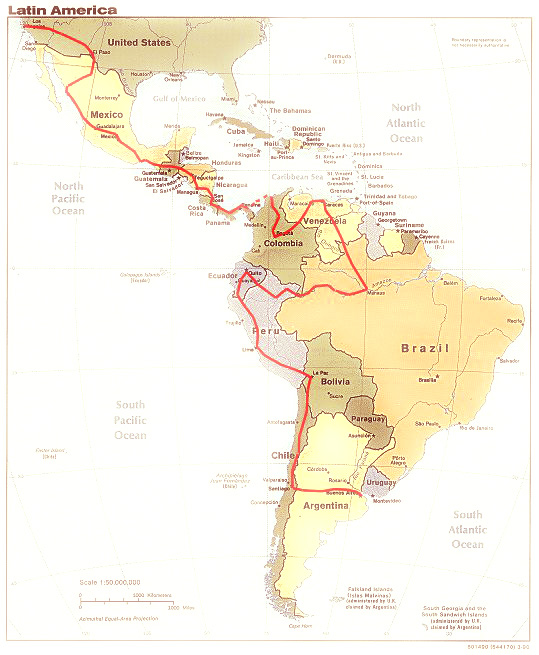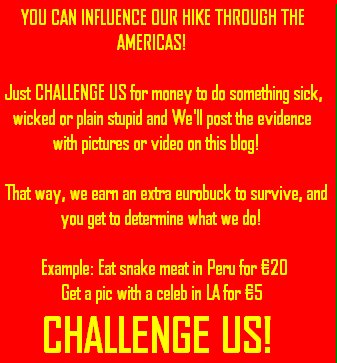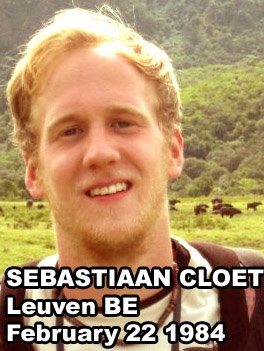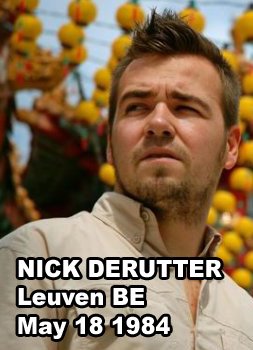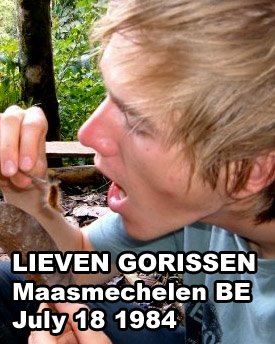Wednesday, 30 July 2008
Wednesday, 23 July 2008
¡Valpo Po!

Whilst Nicolas was hangin' out in Viña, I was livin' Valparaíso. Valpo is a rough diamond.
Some don't like the frenetic harbour city at all. Garbage on the streets, heards of street dogs, strange smells. However, Valparaíso is a Unesco World Heritage Site. And within reason. To me, it's an incredibly intruiging place. The city is a labyrint of boulevards, winding alleyways, century old elevators and stairways. Never seen a city that loves to paint so much.






Built on steap hills alongside the Pacific, Valpo makes you say "WOW" and "AAAH" the whole time. If you're into architecture, warm people and fresh fish on your plate, come to Valparaíso. Í will come back, most definately!!

Tuesday, 22 July 2008
Completos, mastodontes y perros feos

What happened to Nick?
I spent the past week and a half living with the lovable Chilean Carolina and the rest of the Velasquez-Mol family in Viña del Mar (some two hours north of Santiago). We filled the days with kayaking, shooting, walking, horsebackriding, digesting the refined Chilean cuisine and some intense spanish language courses.


Spanish? Well.. Since Chile is a very isolated country (the pacific in the west, the cordillera de los Andes in the east and the Atacama desert in the north), the spanish spoken here, developed into a very distinct language, plenty of 'Chilenismos' and ending every sentence with 'pues' (well), pronounced as 'po'.




Let me also tell you that Chile ranks at number 37 in the UN Human Development Index and that it's infrastructures are among the best in the world. Add to this the stylish (and educated) population and the vastness of it's enchanting environment and you will understand what I mean when I say:


Tuesday, 15 July 2008
Living the Dream
 Howdie folks!
Howdie folks!Have you ever felt like Robinson Crusoe, Indiana Jones and Stefan Everts at the same time? I have!!



For most South America trekkers, tiny Polynesian Rapa Nui - Isla de Pascua, Easter Island, Paaseiland - is entirely off the map. I díd stretch to go the distance. Historian as I am, the island and its remains of a thriving ancient culture has always intrigued me. Back in Nicaragua, I decided my time had come and booked a flight to my dream destination.
The first European to set foot on the island was Dutch navyman Roggeveen and his timing (Easter Sunday, 1722) sealed its moniker. I was the second European visiting the island.

Four days ago, a six hour flight from Chile's capital brought me onto a piece of land in the middle of nowhere - well, in the middle of the Pacific. I've been loving it every day since. On my huge little motorcycle, I cruised from site to site, left no single dirtroad safe for others.



Located in the South-Western corner, Hanga Roa is the only village on Isla de Pascua. The rest of the island is Chilean national park; wall-like cliffs and paradisiacal beaches, volcanos and grass-sculpted landscapes, birds of prey and wild horses.




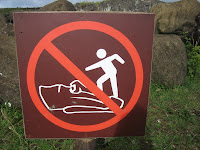
How such an isolated island became inhabited has long stumped historians and archeologists. The most widely accepted answer is that people came from southeast Asia and populated the Polynesian triangle of Hawaii, New Zealand and Rapa Nui. On Rapa Nui, two civilizations formed: the Long Ears of the east and the short Ears of the west, both of whom built large stone altars and put huge statues on top - the famous 'moai'. Never looking out onto the sea, always keeping an eye or two on their people, they represent actual ancestors. The statues were carved out of Rano Raraku, a volcano in the eastern part of the island. The use of timber to move the moai would partly explain the island's deforestation. Warfare and tropical storms did no good to the 850 moai. Most of them were toppled of the ahu and broke to pieces. Recently, many were restored upright.





It's not clear why ancient Rapa Nui's civilisation collapsed. It seems that, at one point, everyone was carving statues and nobody was farming the land...
Wednesday, 9 July 2008
A Grain of Salt
 Hello darling readers!
Hello darling readers!




Add to this that the centre of the salar consists out of an island with hundreds of giant cactuses, and temperatures of -15 and you are ready for one hell of a mind-blowing trip.









On day three lagunas, flamingos and steam-spewing geisers guided the way to the Chilean border and a warm bed in the northern settlement of San Pedro de Atacama.







